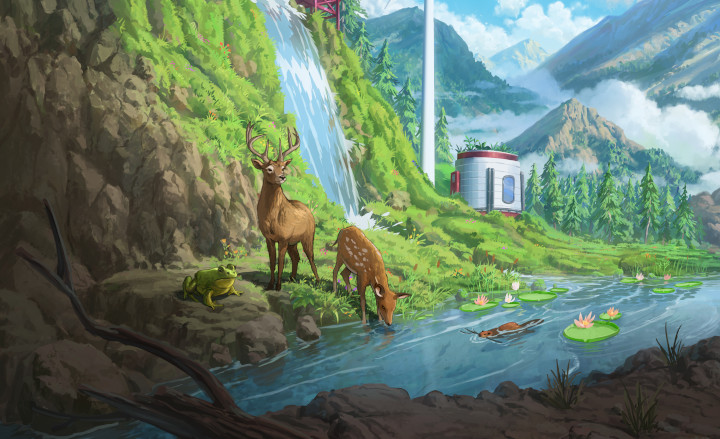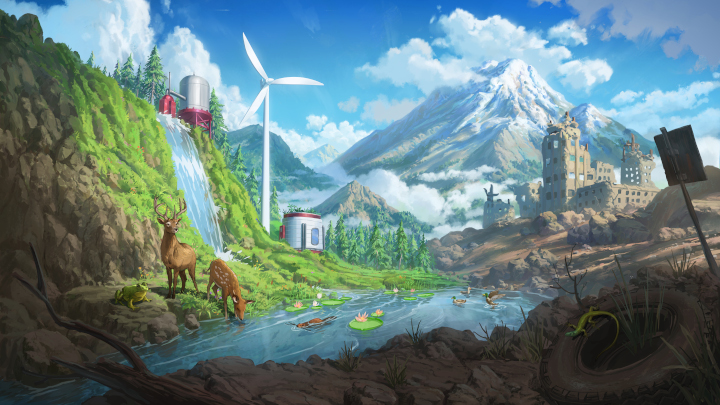
Some city builders will push you to your limit, asking you to juggle several different metaphorical balls at once. When one thing goes wrong, it kicks off a chain reaction, where your failures snowball and you go into panic mode, desperately trying to prevent the total collapse of the thing you’ve been working on for the past several hours. I played a bit of Pharaoh: A New Era last month, and that’s the exact sort of game I’m thinking about.
Terra Nil is different. Terra Nil bills itself as a city builder in reverse — it’s a game in which you take a resource-starved, desolate wasteland and transform it into a lush natural paradise, teaming with life.
In Terra Nil, you do have resources to manage (there’s a leaf-based currency that you’ll spend on various buildings and drones and whatnot), but the game is extremely generous when it comes to doling those out. I’ve completed the game to 100% at this point, and I never once felt like I was even close to running out of those leaves.
This allows you to sit back and chill and take it all in, which I think is what Terra Nil wants you to do. The game might start out dull and grey, but once you start bringing vibrant greens and bright autumnal colors to your world, it becomes a thing of beauty.
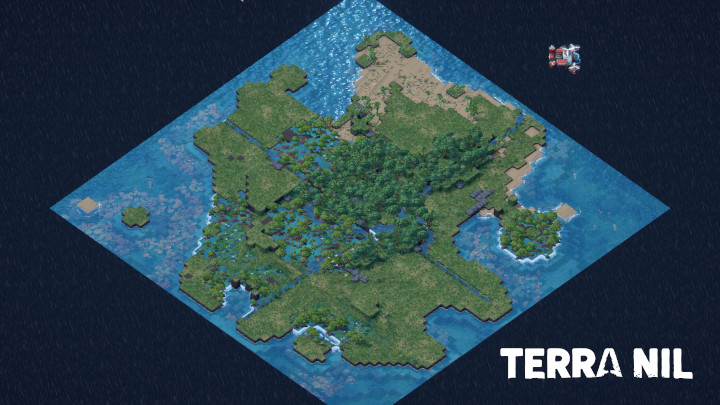
If you’re used to playing a lot of intense, micromanagey city-builders, this might feel kind of foreign. When I first started playing, I was wondering when resource management was going to come around to start nipping at my heels — but then it never does. Instead, the gameplay feels more like an open-ended puzzle with multiple solutions.
For example, in the Polar region, you’ll have to think about the order in which to plant your biomes, because tundra requires very specific atmospheric conditions, and forests require ashes, which you’ll create by setting your tundra ablaze. If you plan ahead, you can make sure you’re building tundra at the exact right time (before you increase the moisture too much), and that you have more than enough of it once you start setting it on fire.
The first time I played this region, I ended up screwing myself over by not creating enough tundra to seed my forest. By the time I realized my mistake, the moisture level was way too high for me to plant anymore tundra. Sure, I could have started plopping down dehumidifiers to reduce the moisture levels, but I also hadn’t hit the 99% humidity challenge yet, and I didn’t want to lower the humidity back down so that I could then raise it back up (or vice versa). So it was easier to just start over.
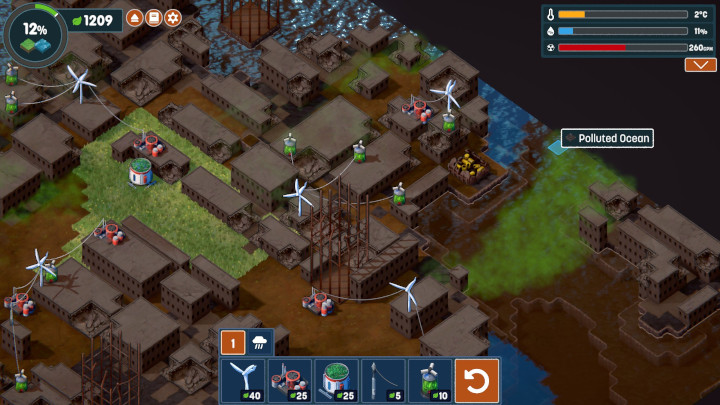
Additionally, the final phase of every map requires you to recycle the structures you built, so you can leave behind a pristine nature preserve with no trace of your activities. This means you’ll have a much easier time if you plan your construction around this quirk: Cluster your buildings in spaces where your recyclers and drones can easily reach them, otherwise you’ll spend extra time building extra monorail tracks or levees to make those areas accessible late in the game.
The first three maps play out as you’d expect, each one introducing a few new ideas while building off what came before. But then the fourth map throws something completely different at you, asking you to build a rocketship and collect seeds so you can leave the world entirely and start the process again on some distant rock somewhere else in space. On top of this, you’re dealing with husks of ruined skyscrapers (which are excellent places for bamboo and eagle’s nests) while an earthquake releases toxic waste into the world.
For me, this late-game twist felt like a pleasant surprise. Just as I was falling into a rhythm, the game became something I didn’t expect. While there’s a seed-collecting minigame that feels half-baked, I did at least appreciate having a new game mechanic to disorient me a little bit right before the game’s ending.
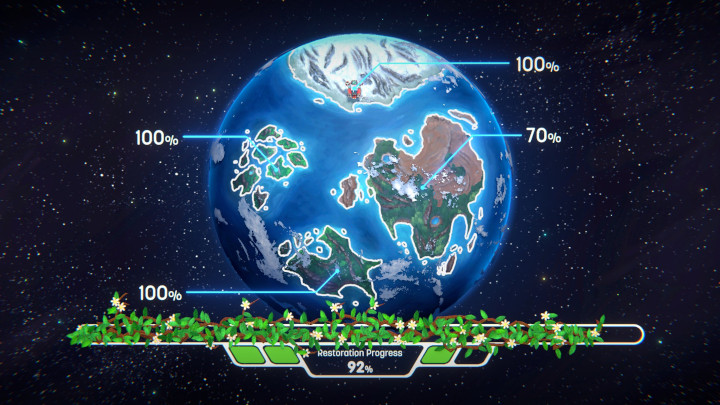
Once you complete the main story, which happens across four maps, you’ll unlock new challenge maps on these same regions. These are slightly more difficult than the story maps, asking you to use familiar mechanics in new ways. For example, the first map you’ll play is the River Valley in the Temperate region. Once you complete the game, you can return to the Temperate region to access the Abandoned Quarry map. While the River Valley has a few trees in it by default, allowing you to set up beehives and get your fynbos cooking, the Abandoned Quarry has none until you grow your own. However, forest needs ash to grow, and in the River Valley region, you would create ash by burning fynbos. Do you see the dilemma? (Thankfully, you can set up dehumidifiers so you can create dry, burnable areas, but this does mean your biome setup has an additional step that must be managed carefully.)
But even these post-game maps don’t really offer any substantial amount of challenge. I breezed through them in a few hours, while listening to podcasts to keep my brain busy. Terra Nil remains chill for its entire duration.
And that duration is not long. I think I spent about 15 hours with the game in total, and that includes all the time I spent writing guides for it. I think you could probably earn 100% completion in less than ten hours — and that estimate includes completing the post-game challenge maps.
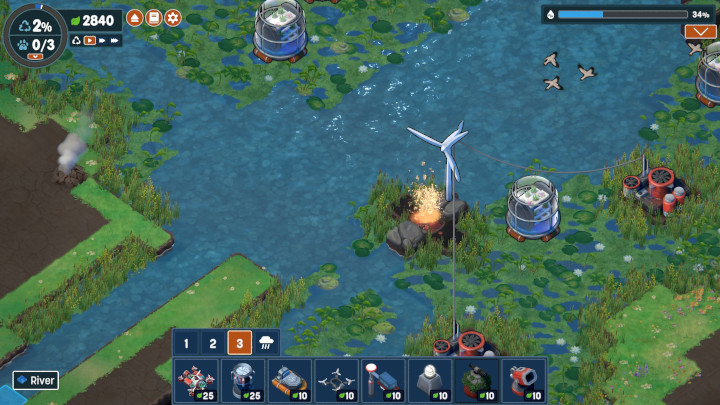
For some folks, Terra Nil is going to feel a little too breezy. The game’s systems aren’t very deep; and they never really ask that much of you, even on the “challenge” maps. So if you want to micromanage several resources at once, performing that plate-spinning act that more in-depth city-builders require, then Terra Nil probably isn’t for you. (The good news, though, is that Pharaoh: A New Era is probably going to be your jam, and you can play that instead.)
But if you want something that you can unwind with — something that will let you turn off your brain and look at all the pretty colors — then Terra Nil is pretty fun. I found myself captivated from start to finish, and while I do wish there were more challenge maps to give me an excuse to spend a few more hours with it, I did enjoy my oh-so-brief time with the game.
Disclaimer: I was given a review code for Terra Nil on Steam, but the opinions expressed in this article are my own.
